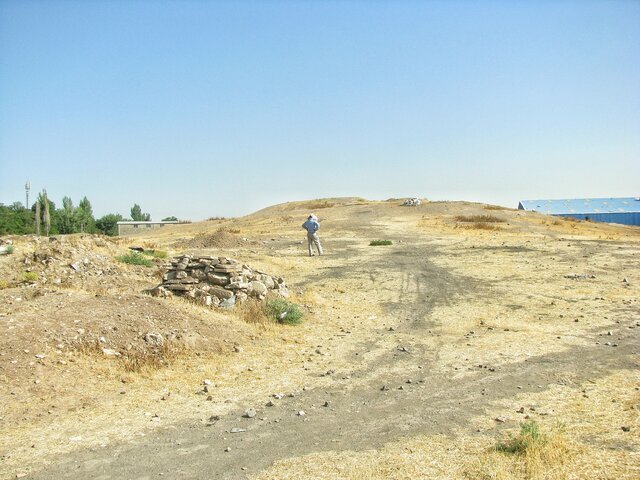Ancient human settlement found in Qazvin

TEHRAN – Iranian archaeologists have discovered a human settlement, believed to be prosperous during the medieval Islamic times (6 to 7 AH), in Qazvin, west-central Iran.
The discovery was made during a demarcation project, held near Erich Tepe, during with some centuries-old relics and shreds were unearthed from archaeological trenches, according to the Research Institute of Cultural Heritage and Tourism.
The survey probed evidence of human settlements through stratigraphy [rock layers] across Erich Tepe (Alvand Tepe) in Qazvin province, said Iranian archaeologist Fariba Mohammadi who led the project.
“23 trenches measuring one by one meters and another measuring one by two were caved during the project to propose legal boundaries of the archaeological site and studding its stratigraphy,” she explained.
The survey led to the discovery of a human settlement, which dates back to the centuries 6 to 7 AH, and it also yielded some pottery pieces and fragments of the time as well, she noted.
Qazvin sits in a wide, fertile plain at the southern foot of the Alborz Mountain range. Originally called Shad Shahpur, Qazvin was founded by the Sasanian king Shapur I about 250 CE. It flourished in early Muslim times (7th century), serving as a base for Islamization, and was surrounded by strong fortifications by Harun al-Rashid. Genghis Khan laid waste the city, but it revived under the Ṣafavids when Shah Ṭahmasp I (ruled 1524–1576) moved the capital from Tabriz to Qazvin.
Modern Qazvin is a regional communications center, connected by road and rail with Tehran and Tabriz and by road with the Caspian Sea and Hamadan. Industries include cloth weaving, cotton ginning, wool carding, flour milling, food processing, and electrical equipment manufacturing.
AFM/MG
